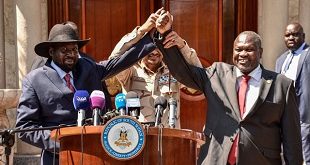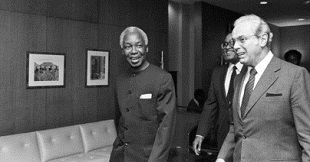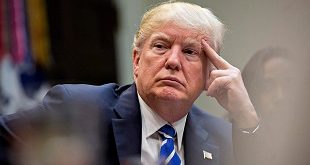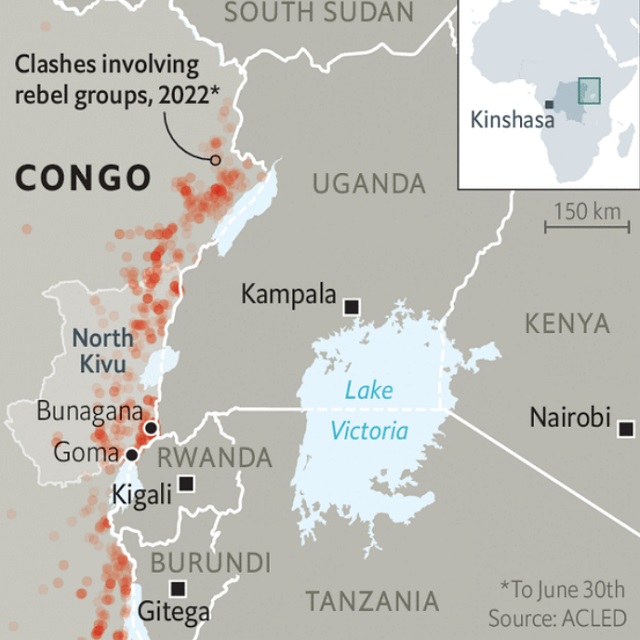
Local and foreign-backed forces wage war over mineral riches
Some residents of the eastern Democratic Republic of Congo simply call it la guerre sans fin — the war without end. One morning in August, Abigael Bahati felt it in her skin as she searched for cassava leaves close to the village of Kanombe.
“I was hungry and I had gone to look for food but I was caught,” says the 28-year-old mother of an 18-month-old baby. “They took me away and raped me,” she recalls, adding that others fled in fear of their lives.
Her attackers, she says, were rebels with the M23, an armed group that has resurfaced with renewed strength after a 10-year hiatus. It is now terrorising civilians as part of a mission to gain control of swaths of territory around Rutshuru, a town bordering Uganda and Rwanda. “They . . . go to the farms, attack people, beat you up and even cut you with knives,” Bahati adds.
The M23 — which Congolese officials, local people and analysts accuse of being backed by Rwanda — resumed fighting in November 2021 and has since been waging a brutal offensive in the resource-rich, conflict-ridden eastern Congo, causing deaths and mass displacement.
More than 355,000 Congolese have fled their homes so far this year in 2022, according to the UN, pushing the number of those displaced in DRC due to overlapping conflicts to more than 5.5mn this year — the largest recorded humanitarian crisis of its kind in Africa.
Congolese president Felix Tshisekedi warns that regional tensions could escalate into a full-blown war “if Rwanda’s provocation continues”. His Rwandan counterpart Paul Kagame, who denies his country is behind the M23, says shelling from conflicts waged in DRC territory has crossed its borders.
M23, however, is just one of about 100 rebel groups pillaging the area in a complex, deep-rooted war that, for the most part, has escaped international attention. Congolese military officers speak of fighting groupes locaux et groupes étrangers — local militias as well as those with Rwandan and Ugandan roots.
Here, amid a longstanding failure from the state to control the area, regional tensions, local conflicts and historic ethnic struggles are compounded by a deadly contest for sought-after minerals and agricultural assets. This has turned eastern DRC into the battleground for one of the world’s longest-running wars.
Lt. Gen. Johnny Luboya Nkashama, the governor of the Ituri province, is blunt about the main impetus: “This is a war over resources.”
Congo, a common shorthand for the DRC, is the resource-rich heart of Africa. The third most populous country in the sub-Saharan region, with 92 million people, the DRC has enormous mineral wealth such as cobalt, a key component for the battery industry. Additionally, it has significant hydroelectric potential and more than 70 million hectares of untapped arable land.
Yet it remains one of the world’s poorest countries, according to the World Bank, with 73 per cent of the population living on less than $1.90 a day. Despite its potential, the country is failing to achieve sustained and equitable growth, partly due to brutal conflict but also a corrupt elite accused of siphoning off the nation’s natural resources.
It is these lucrative resources that also lure bad actors from neighbouring countries to the eastern DRC.
“For years, the DRC’s neighbours have used militias in its east — Congolese and foreign alike — as proxies,” a Crisis Group report says. “Rwanda and Uganda have long sought to exert influence in the area, whose abundant mineral resources buttress their economies.”
Standing in the province of North Kivu, Col. Guillaume Ndjike Kaiko, spokesman for the Congolese armed forces, known as FARDC, points across the border to Rwanda. “The enemy is there and active,” he says.
Congolese officers consider the M23 to be Kigali’s proxy army. “These are not just rebels,” Ndjike Kaiko adds. “These are nations that are coming together to wage a purely economic war on the Democratic Republic of Congo.”
Who’s behind the M23?
The M23 emerged about a decade ago, “emanating from a long tradition of Rwandan-backed rebellions in the eastern Congo”, according to the Kivu Security Tracker (KST), an organisation that maps violence in eastern DRC. It “quickly acquired a significant fighting force”, briefly occupying Goma, a city of about 700,000 people, in 2012.
It was defeated the following year by Congolese and UN troops, leading to a peace agreement, which “Kinshasa never put into practice,” says Lawrence Kanyuka, an M23 spokesman. As a result, Congolese generals say the resurgent M23 is now the “biggest menace” in a vast area plagued by militias where the KST estimates more than 3,100 people have been killed over the past year.
It leaves many wondering where the M23’s source of strength comes from. Bintou Keita, the head of the UN’s stabilising mission which is known as Monusco, told the UN Security Council in June that M23’s capacity now appeared to be that of a “conventional army” after rebels seized the town of Bunagana on the lucrative border with Uganda. The M23 has also been accused by the Congolese of shooting down a UN helicopter, killing eight peacekeepers, which it denies.
Lt. Gen. Marcos Affonso da Costa, the commander of Monusco, says they’re “facing an enemy that is even stronger than what we had 10 years ago”. “To defeat it you need to have a lot of investment and military structure, you need . . . helicopters, ammunition, artillery, intelligence, radar systems,” he adds. This capacity is something experts say the Congolese military lacks.
A leaked report in early August from a UN group of experts speaks of “solid evidence of the presence of, and military operations conducted by, members of the Rwandan Defence Forces”, or RDF, supporting the M23 in DRC territory.
“We do not have Rwanda’s support,” the M23’s Kanyuka insists. Brig. Gen. Ronald Rwivanga, the spokesman of Rwanda’s Defence Forces, condemns allegations of its involvement as “absolutely false”.
The war’s deep roots can be explained as an unintended legacy of the Rwandan genocide in 1994, when Hutus killed more than 800,000 ethnic Tutsis and moderate Hutus across 100 blood-soaked days. More than 1 million Hutus, including the defeated government army, fled and sought refuge in Congo.
In 1996 and 1998, Rwanda and its Ugandan allies invaded eastern Congo, ostensibly to hunt down genocidaires, spurring a string of conflicts that sucked in several countries, earning the name “Africa’s world war”. Between 1998 and 2008, about 5.4 million people were killed in eastern DRC, according to the International Rescue Council, although the number is disputed.
The conflict toppled Congolese dictator Mobutu Sese Seko and spawned an alphabet-soup of armed militias across eastern Congo, each seeking natural resources.
That crisis is now back at full force. The Tshisekedi government last year declared one of the country’s longest states of siege since its independence from Belgium in 1960, with military officers taking over from civilian administrators.
Kigali has accused Congolese troops of “fighting together” with the Democratic Forces for the Liberation of Rwanda, or FDLR, whose ranks include Hutu fighters. The M23, dominated by Tutsis, claims to protect the Congolese Tutsi against militant Hutu.
“Until the problem of the FDLR, which operates in close collaboration with the DRC army, is taken seriously and addressed, security in the Great Lakes region cannot be achieved,” says Yolande Makolo, the Rwandan government’s spokesperson.
This is backed up by locals on the ground who speak of Congolese soldiers and FDLR rebels sometimes fighting the M23 together and accuse them of being involved in the illicit trade of charcoal.
Rwivanga, says the FDLR is a “big threat” to both his country and the DRC. Tshisekedi, meanwhile, has accused the FDLR of ambushing and killing Italy’s ambassador on the road from Goma to Rutshuru last year.
A senior Congolese military officer says his country’s army has no policy of making deals “with the bad boys” of the FDLR, but acknowledges “it can happen that one commander in the bush does it”.
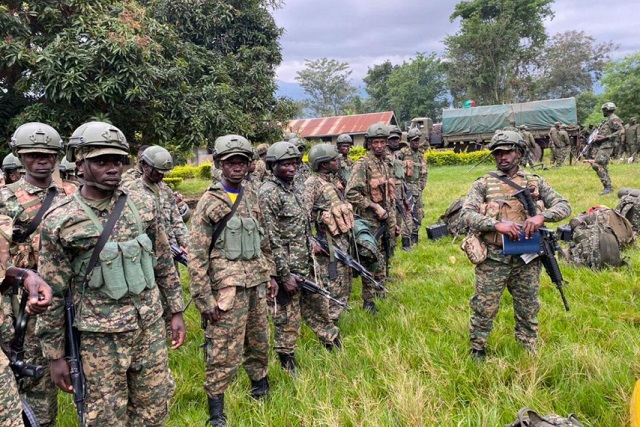
Too rich and too big
In a war of many layers, further north, in the province of Ituri, rebel groups “come into the villages, kill the people, occupy land, forcibly take youngsters, burn houses, rape and decapitate people,” says Rachel Taruayo Adroma, a local senior civilian official.
Parts of Ituri and North Kivu are festooned with rebels from the Allied Democratic Forces, an Islamist extremist group linked to Isis. The group, which originated in Uganda, was blamed for twin blasts that rocked central Kampala in November.
There are also several Mai-Mai, a term for nationalist armed groups, and the fearsome Co-operative for the Development of Congo, or Codeco. The local rebel group was accused before the UN Security Council in June of committing some of the war’s worst atrocities — including forcing its victims of sexual violence to cook and eat human flesh.
“There is never a lack of armed groups,” says Taruayo Adroma. “It never stops as there is always a resource for them.” Among the spoils are gold, coltan, diamonds, cassiterite, cocoa, timber, charcoal, with various groups controlling strategic supply chains into Rwanda and Uganda, analysts and Congolese officials say.
“The nexus of conflict, minerals, rebels and foreign backers has bedevilled Congo for decades,” notes a June report by the Africa Center for Strategic Studies, a think-tank. A “critical part of the problem”, they say, is that Congo’s neighbours are exporting resources they do not have in large quantities.
In October, Tshisekedi spoke of the “predatory will” of its neighbours. A Congolese mining belt running along its borders with Uganda and Rwanda holds vast amounts of gold and some of the world’s largest deposits of coltan, an ore mined by hand that is key for manufacturing electronic devices.
“This is a regional problem that centres on the Democratic Republic of Congo being too rich and too big,” says Joas Mbitso Ngedza, a former deputy finance minister who negotiates with Kinshasa on behalf of Codeco. On his feet are trainers with the word WAR emblazoned across them.
The U.S. Treasury has said that “in eastern DRC, where there are approximately 130 active armed groups, the gold trade is a major driver of conflict”. They believe “more than 90 per cent of DRC gold is smuggled” to states including Rwanda and Uganda, where it is refined and exported mainly to the United Arab Emirates.
Gold is Uganda’s top export. Yet a May report by the Uganda Extractive Industries Transparency Initiative, a watchdog, says “there have been significant discrepancies” between official gold production figures and the exports of gold reported by the country’s revenue authority. This “implies that the major part of the gold exported is not part of the local and formal production”.
The UN believes that several gold mines in Ituri are controlled by Codeco and Mai-Mai factions who smuggle almost all of the region’s gold out of the country.
And it is not just gold. The UN also notes that “criminal networks and some FARDC members continued to traffic in and profit from untagged coltan from mines” in North Kivu, some of which is smuggled into Rwanda for onward trade.
Virunga National Park, which borders Rwanda and Uganda, has found itself in the eye of the storm. M23 now occupies the area which is home to roughly 300 mountain gorillas.
“Rwanda is a very small country with very limited resources, and has huge needs, part of those are met by Congo’s raw materials transiting through Rwanda,” says Emmanuel de Merode, a Belgian prince who is the park’s director. “The M23 are just holding the ground.”
Tshisekedi has fostered closer ties with Uganda, allowing its troops to fight the ADF in North Kivu and approving the construction of roads linking the two countries — offering an alternative to Uganda-Rwanda border crossings. Armoured cars and soldiers of the Uganda People’s Defence Force are a common sight by the roadworks where they are stationed to protect the works, staff and equipment.
These moves were seen as unfriendly by Kigali, which has old tensions with Kampala, analysts say.
The situation is deteriorating
There are two ongoing efforts to mediate tensions, one led by Angola and another by Kenya, under the East African Community, which has a regional force. In August, it deployed a unit from Burundi to fight rebels inside DRC, although the Burundian military itself has been involved in the conflict; previously making incursions into South Kivu to fight the Resistance pour un État de Droit militias, according to the UN.
With the world’s attention focused on Russia’s invasion of Ukraine and, closer to home, the devastating civil war in Ethiopia, Congolese people feel the international community is only timidly engaging.
US secretary of state, Antony Blinken, denies “turning a blind eye”, saying he is “very concerned by credible reports that Rwanda” is backing the M23 when he visited Kinshasa and Kigali in August.
President Emmanuel Macron brought Tshisekedi and Kagame together on the sidelines of the UN general assembly in September. The three leaders “agreed to work together to ensure that M23 is removed from all occupied areas as quickly as possible” and “to end the activities of armed groups in the Great Lakes region, including the FDLR.”
Since then the two governments have been engaged in a war of words. On Oct.24, Rwanda released a statement rejecting “unjustified attempts to make Rwanda a scapegoat for the internal politics of DRC”.
The DRC swiftly responded with its own statement “denouncing the dishonest rhetoric of Rwanda and its military activities on Congolese soil”, adding that Kigali’s “interventionist and expansionist ambitions will never be tolerated”.
“The security situation is only deteriorating,” warns John Banyene, a civil society leader in Goma, who joined protests against UN peacekeepers over escalating waves of violence.
For those living in eastern Congo, whose war wounds have had no time to heal, this gives little cause for hope. Bars in villages ravaged by fighting carry allegorical names, such as La Vie Sans Combat — life without fighting.
For displaced cocoa farmer Mwasi Mbayahi, who was born sometime before independence, peace is something she has barely known. Originally from the outskirts of Beni, in North Kivu, she forgets how many friends and relatives she has lost to the lasting conflict.
“Now I had to run because things got bad again,” she laments, having fled a raid in September by ADF on cocoa farmers in the village of Bulongo, where the militias killed half a dozen civilians and torched houses. “We haven’t had peace in a long, long time. I cannot remember if we ever had.”
****
Source: NYT
 The Independent Uganda: You get the Truth we Pay the Price
The Independent Uganda: You get the Truth we Pay the Price
